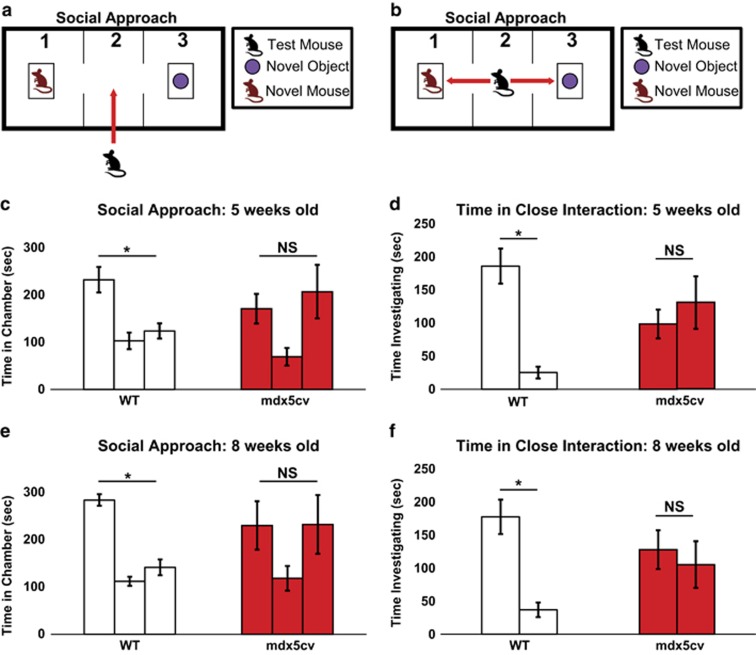Figure 1.
Dystrophic mice have significant neurobehavioral social deficits from juvenile to adult stages. (a and b) Schematic showing the layout of the social approach experiment in which the mouse is placed in the center chamber (2) and will move towards the novel mouse or novel object. (c–f) Social approach data at 5-week-old (c and d) and 8-week-old (e and f) wild-type (WT; open bars) and mdx5cv (red bars) male mice show persistent neurobehavioral deficits in the dystrophin mice when compared with age-matched wild-type controls. The social approach F-value of time spent in each chamber for WT mice at 5 weeks of age was F1,8=12.834 and at 8 weeks of age was F1,8=23.491. The social approach F-value of time spent in each chamber for mdx5cv mice at 5 weeks of age was F1,8=1.398 and at 8 weeks of age was F1,8=1.09. (c and e) The left bar in the figure represents chamber 1 (novel mouse), the middle bar chamber 2 (center point) and right bar chamber 3 (novel object). (d and f) The left bar in the figure represents chamber 1 (familiar mouse) and the right bar chamber 3 (novel object). The time investigating F-value for WT mice at 5 weeks of age was F1,8=20.134 and 8 weeks of age was F1,8=39.175. The time investigating F-value for mdx5cv mice at 5 weeks of age was F1,8=4.44 and 8 weeks of age was F1,8=3.54. For all the panels, *P-value <0.05 and NS, no significance. Eight mice per cohort were used for each social approach experiment. We used a 95% confidence interval for significance (P<0.05) with eight degrees of freedom.

